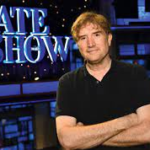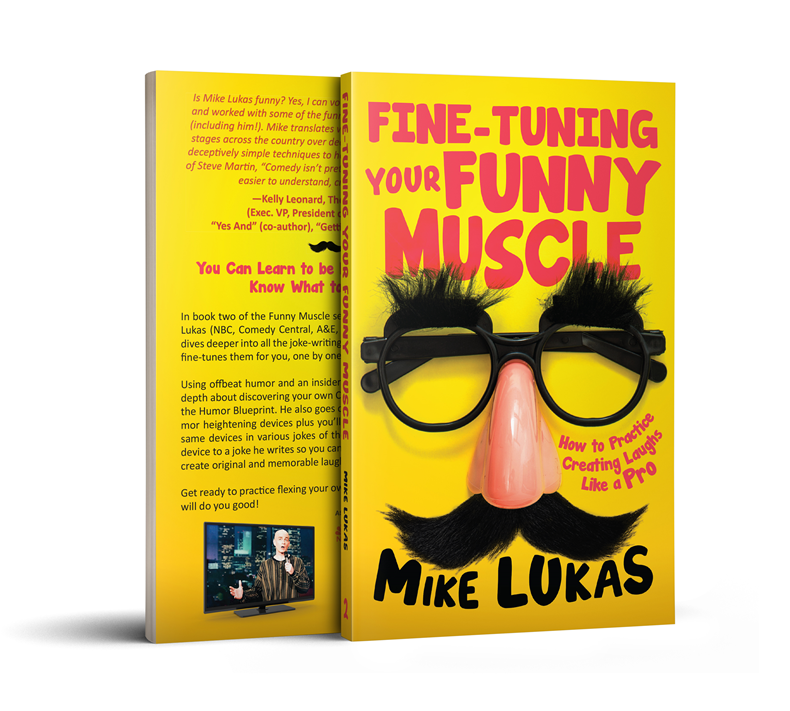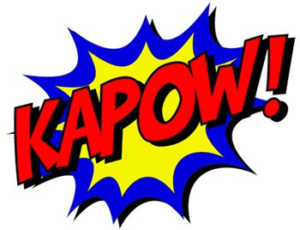An ad for my Funny Muscle books claims:
“Anyone can learn to be funnier; you just have to know what to practice.”
One guy on social media—let’s call him Ken—disagrees.
“As far as I’m concerned,” wrote Ken in response to my ad, “either you’re funny or you’re not.”
Okay, first off, who responds to an ad? Who’s got that kind of time? Swipe left, friend.
I picture Ken texting Coke ads, “I drink OJ, ya soda jerks!” and emailing Ford for floating F-150 ads across his feed. “I’m a station wagon man. Stop it with the trucks!”
Ken’s frittered free time aside, his “either you’re funny or you’re not” heckle is just not true.
But I do realize a lot of people think that way.
After I read Ken’s response, I checked out his profile. It said he’s a guitar instructor.
Hmm.
I wrote him back and asked, “Ken, if I take guitar lessons from you and learn how a guitar works, and then I practice what you teach, would I get better at it?”
He replied, “Of course, Mike. I’ve taught dozens of beginners how to play guitar.”
“And they’re more musical now?”
“Absolutely.”
“Then why can’t someone learn how laughs are created, practice that, and get funnier?”
Ken typed back, “Hmm. I never thought of it that way.”
Well, I have, Ken. That’s how I spend my free time.
In fact, that’s the same “learn, practice, and improve” philosophy I teach in Finding Your Funny Muscle: How to Create Laughs Like a Pro, the first installment of this three-book series.
It’s a fantastic book; just ask me.
No joke, I wish I had had access to these Funny Muscle books when I first started cracking up people for a living last century.
Of course, that was back in the late 1900s (when our TVs and computer screens were thick and our ties and thoughts on sexuality were narrow). The game plan in these books would have saved me a lot of comedy blood, sweat, and fears throughout my twenty-four-year career of making drunk people laugh for money.
In Book One, Finding Your Funny Muscle, I say that funny’s not a bone, all stiff and rigid. It’s more like a muscle, flexible and elastic, growing stronger with use.
I also describe how the best comedians all have a few fundamental traits in common.
For instance, each has a clear Comedy Lens, which is the twisted porthole through which they examine life to create their original punch lines.
Using scores of examples in that first book, I show how the best pro comics (despite never having read any of my books) all use their Comedy Lens with a “premise, setup, punch line” game plan in order to create their original laughs. It’s what I call the Humor Blueprint, and it comes naturally to many of those expert joke slingers. It sets them up to use the Thirty-Six Humor Heightening Devices I share at the back of all three Funny Muscle books. Alone or combined, these devices help us flex our ideas for original laughs.
Like I said, most pro comics execute all those steps organically without having to “dissect the frog” by breaking it down into conscious choices first.
However, you and the rest of the world can learn to do that, then practice it and get funnier.
Create original laughs by repeatedly using the step-by-step strategy built into the humor blueprint. You’ll gradually get funnier by practicing it like you’re strumming new chords on one of Ken’s fancy guitars.
Fine-Tuning Your Funny Muscle Itinerary
Head’s up: like I said, this is book two of a three-book series.
If you’re the type of person who reads book two first, carry on; I salute you. (Bet you also build IKEA furniture and Lego sets without reading the directions first, don’t you, ya sicko?)
For everyone else, please be sure to read Finding Your Funny Muscle: How to Create Laughs Like a Pro first before you get into this one. That first book contains a basic breakdown of everything I’ll be building on in this second volume of the series.
Here, I’ll dive deeper into all those Funny Muscle concepts and fine-tune them for you, one by one.
First up, We’ll Nail Your Comedy Lens
To start off, I’ll deliver more insights on discovering your own Comedy Lens and explain how having one can keep you from becoming a generic “Corner Quipper.” I’ll give you some above-the-net suggestions for how to clarify your own lens as well as provide examples of some famous Comedy Lenses you may have heard of to help guide you.
You’ll Master the Humor Blueprint
Next, I’ll dive deeper into the humor blueprint. Meaning, I’ll slow-walk you through all the steps pro comics take to set up for original laughs. Then I’ll show you how they heighten that into a list of potential punch lines they can use in their act.
And so you can also see how this game plan works to shift a funny idea into a deliverable joke, I’ll use the blueprint to break down one of my stand-up jokes. Then I’ll heighten it repeatedly in the following section.
Practice the thirty-six Heightening Devices
Finally comes the meat of book two, which is where I’ll go over all thirty-six humor-heightening devices in depth.
You’ll see how the pros use these same devices in various jokes of theirs. Then I’ll apply each device to the joke I wrote in chapter one so you can better see how each device works to create laughs from scratch.
Otherwise, you’re just giving a dang speech.
Create a Standup Comedy Routine
At the end of the book, I’ll turn that same joke I’ve heightened thirty-six times into a short stand-up comedy routine worthy of trying out at an open mic. It’s proof that the laughs that come out of this process can be used to create performable material. This becomes something that you can then practice on your own to grow funnier over time.
To help with that, I’ve included a glossary as well as a printable list of all thirty-six humor-heightening devices. That way you can use them wherever you do your writing.
I’ve also included the story of my second Tonight Show appearance, a tale filled with mind f**ks galore. That experience taught me exactly what I was missing from my comedy tool belt, all of which I turned into this Funny Muscle book series and master classes.
I’m getting the light. Time to wrap up this intro.
You can absolutely learn to be funnier.
Just treat your sense of humor, your Funny Muscle, like it’s one of Ken’s guitars. Learn from an expert how it works, how to “flex” it, then practice that until it becomes second nature. Do this long enough and you’ll get better at it because that’s how skills develop.
There’s a method to the madness of creating laughter, and it begins with truly understanding how your Funny Muscle works.
Let’s get this comedy deep dive started. deep dive started.
“The blueprint for how to be funny.”
- Charna Halpern, author of Truth In Comedy and Art By Committee

“Deceptively simple techniques.”
- Kelly Leonard, The Second City (Exec. VP, President of Theatricals)

“Lukas really knows what he's talking about.”
- Brian Stack, Writers Guild Award Winning / Emmy Nominated writer for Conan O’Brien, Stephen Colbert

Fine-Tuning Your Funny Muscle is now available for pre-order (eBook format) on Amazon.
Be one of the first to receive these next level insights on creating laughs like a pro once it’s published in November.
Get your FREE copy of The Business of Comedy!

Includes:
- How Comedians are 5-Tool Players
- How to Attract a Following
- How to Get Bookings
- How to Create Multiple Income Streams
- Manager vs Agent
- And More!






